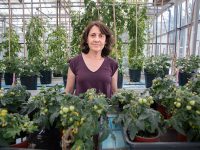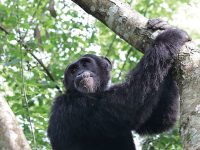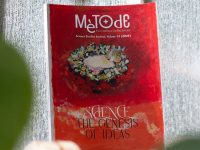Social evolution
A biological history of cooperation
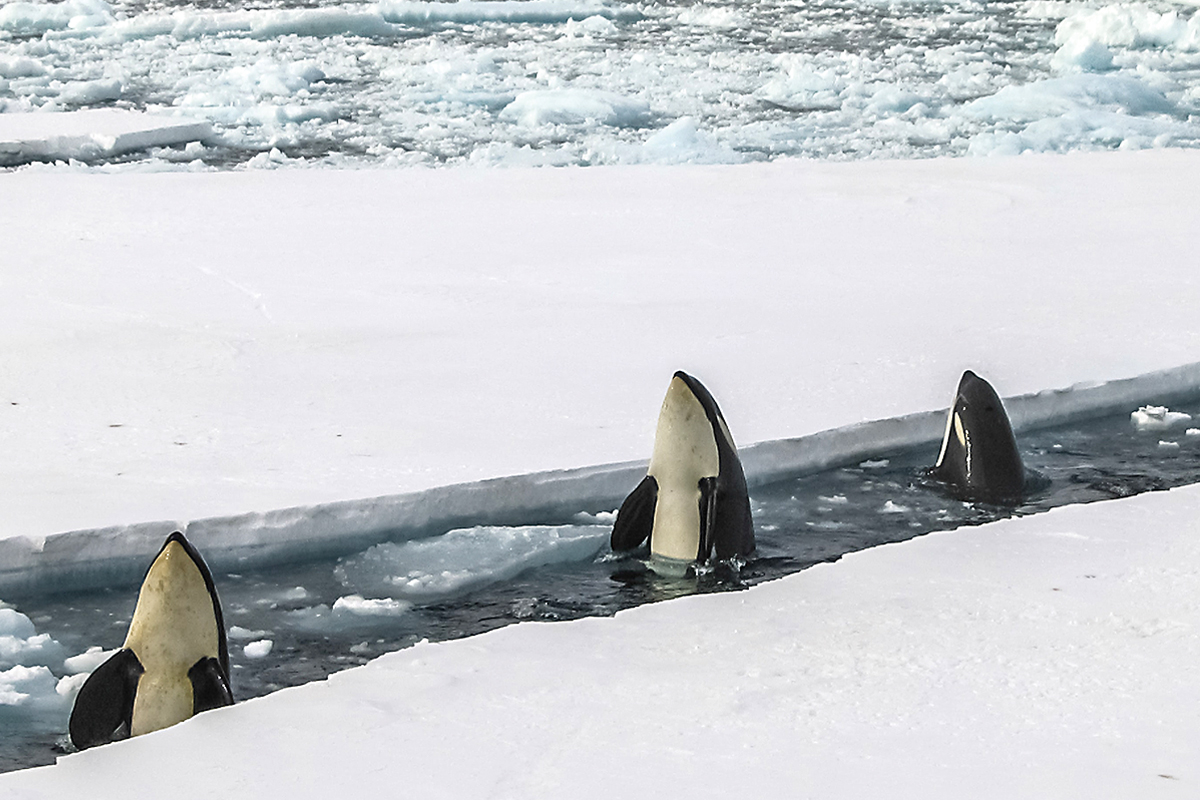
To talk about life is to talk about cooperation. Its evolutionary origin, different levels of organisation, and current complexity are the result of cooperation between different biological entities. This is also the case with animal societies, including the most complex of them all, the human society. Our language and extraordinary culture, our cities and vast social networks, are the fruit of cooperation. In a world dominated by Darwinian competition, how has cooperation come to play such an important role? Social evolution, the study of the biological bases of cooperation, tackles this question. From the origin of the first cell and to the explosion of social life in animals, social evolution explains how and why cooperation has guided life on our planet.
Keywords: biology, cooperation, altruism, social behaviour, human societies, social evolution.
From atoms to gods
Long before the first living organism roamed this planet, there were already countless galaxies peppered with immense thermonuclear engines we call stars. In a perpetual struggle between the implosive force of their own gravity and the explosive force of continuous nuclear fusion within, stars seeded the universe with the elements of the periodic table. Among them was carbon, the basis of the complex organic compounds found in interstellar gases, asteroids, and the hydrothermal vents of our planet’s seabed. Sometime around 3.8 billion years ago, floating on a sea of organic molecules warmed by these hydrothermal vents, the «building blocks of life» organised themselves into the first replicators.
«The evolutionary origin of the cell is based on cooperation»
At that very moment, Darwinian evolution began to operate. Driven by it, primordial life organised itself into cells and learnt to satisfy an incessant craving for energy. First, using molecules from its environment and, later, tapping into the inexhaustible energy of the nearest thermonuclear engine, the sun. Once equipped with such small energy generators, life conquered the planet. It spread everywhere, from the deepest abyss to the highest peaks, from scorching hot deserts to the most frigid plains. It banded together into symbiotic, multicellular, and social organisms. It learnt to hunt and flee from other organisms, and also to observe, hear, feel, and perceive the mechanical waves, photons, electromagnetic fields, and chemicals that made its world tangible. It learnt to run, crawl, glide, fly, swim, and dig, even to navigate using the stars above. It learnt to sing, to caress, to be moved, to love. It learnt to learn, producing nervous systems complex enough to remember the past and anticipate the future. It became self-aware, built tools and, in an insignificant lineage of African primates, used symbols to propagate its memory from generation to generation. For the first time on this planet – perhaps in the universe – life wondered about itself, about the secrets to its own existence. It painted the Mona Lisa, composed the ninth symphony, and built grandiose reticular cities with breath-taking skyscrapers. It split the atom, explored the cosmos, and redesigned itself; deeds worthy of a god.
The common thread to these milestones is something that is intrinsic to life; something that has not only accompanied life on its unusual path, but has, to a great extent, guided it (Bourke, 2011; Marshall, 2015).
The evolutionary theatre of cooperation
As we know, life on this planet (possibly on many others) is based on cells. A fact less well known is that the evolutionary origin of the cell is based on cooperation. Let us place ourselves approximately 0.5–1 billion years after the formation of the Earth (about 3.5–4 billion years ago). During this period, a series of critical changes occurred that led the first replicators, the first molecules with the ability to reproduce that we would now consider life, to organise themselves into a cell. This was a critical milestone because it represented the first «individual» and, with it, the appearance of prokaryotes (i.e., bacteria and archaea). Of all the phenomena that needed to take place, one of the most surprising was that different replicators (the future genes) cooperated to organise themselves into a single membrane-bound genome. Not only that, the appearance of the first living individual might have accelerated the action of natural selection, an already irreversible evolutionary process that would eventually transform the surface of the planet, at that time still barren and inhospitable.
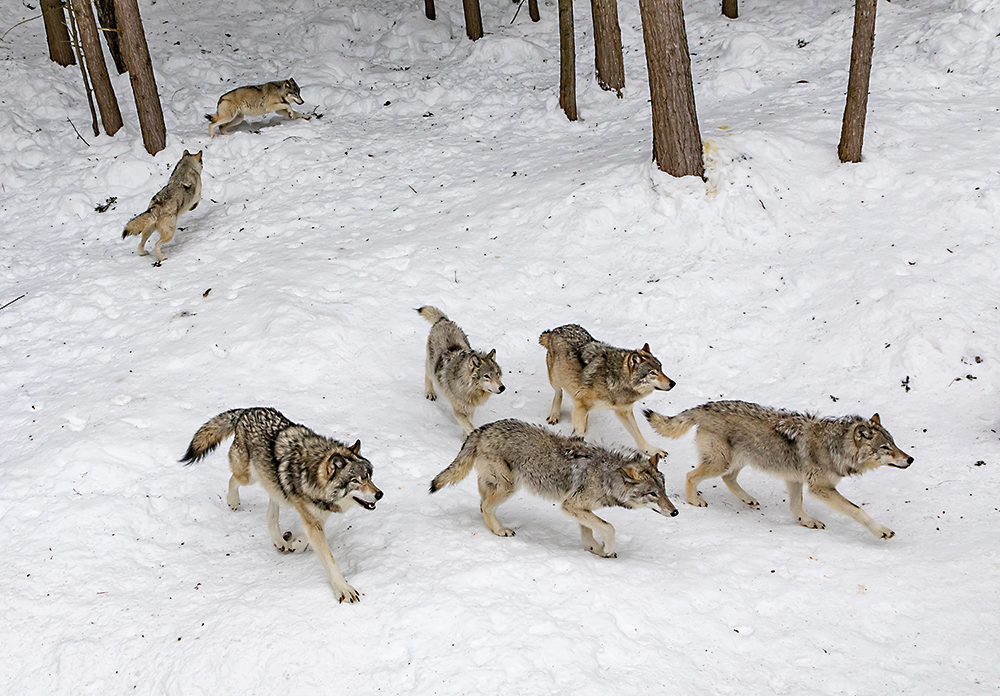
One of the ultimate consequences of multicellularity is the emergence of the first animal societies. Many organisms organise themselves into social groups, for example wolves or coral colonies. / Eva Blue – Unsplash
As a consequence of this process, and after the appearance of the first prokaryotes, life underwent an explosion in diversity (an adaptive radiation) from which a multitude of different microscopic species emerged, each adapted to exploit a different aspect of the primordial environment in which they lived. After hundreds of millions of years of evolution in this prokaryotic world, one of the most decisive events in the history of life occurred: one prokaryote (a bacterium) was «swallowed» by another (an archaeobacterium) and the two combined into a new organism through a process known as «endosymbiosis». This fusion was quite extraordinary: two single cells cooperating closely to give rise to a new type of individual, with a defined nucleus1 and an extraordinary evolutionary advantage. That little «merged» cell specialised in mitochondria, a cellular organelle abundant in today’s eukaryotic cells. Mitochondria act as powerhouses, providing far more energy than a single prokaryotic cell is capable of generating (some cells have thousands of mitochondria), which allowed the eukaryotic cell to grow in size and complexity. More available energy implies faster metabolism and, therefore, the ability to do more. Among other things, this allowed eukaryotes to increase the size of their genome and synthesise more proteins, combining them in increasingly complex ways to colonise ecological niches inaccessible to prokaryotes. We also know that endosymbiosis happened at least once more (probably more than once) to give rise to chloroplasts, the «solar power plants» that make photosynthesis possible and that gave rise to the plants and algae that flourished into a green Earth.
Thus, prokaryotes and eukaryotes began to coexist in a Darwinian world where competition to contribute more genes to the next generations makes reproduction one of the processes subject to the most intense selective pressures. These early organisms, like all prokaryotes today, reproduced asexually; they generated identical copies of their genome that they passed on to their offspring, along with part of their cytoplasm. However, although no clear trace has been found in fossils, phylogenetic analyses suggest that an enigmatic and more fun way of reproducing, sex, originated in a common ancestor to all eukaryotes. An overwhelming majority of eukaryotic organisms (estimated at over 99.9 %) reproduce sexually, which consists on two different organisms generating gametes that contain only half their genes that then combine to form a zygote. In other words, sex requires that two organisms sacrifice half their genes for the formation of common offspring. Another example of cooperation.
The next major evolutionary transition would give rise to a new type of individual and would again be based on cooperation: multicellularity. We know that the transition from single-celled to multicellular organisms occurred independently at least 25 times across the tree of life. On each of these occasions, several cells had to organise themselves cohesively to give rise to a new, more complex individual. Cooperation within had to be very close because most of the cells that make up a multicellular organism simply forego reproduction, as only a small number of cells, the germ cells, reproduce. The advantages of multicellularity are undeniable. They include, for example, the ability to grow far beyond the physical limits imposed by a maximum cell size, and open up the possibility of cell differentiation and specialisation. In short, multicellularity gives rise to much more complex individuals with access to previously unattainable ecological niches. In fact, multicellularity gave rise to various evolutionary radiations that eventually led to the groups of multicellular eukaryotes: fungi, animals, algae, and plants which, together with prokaryotes, make up the entirety of our biome.

Figure 1. Stages in the social evolution of a new individual. 1) Different individuals cooperate with each other for direct and indirect benefits, giving rise to a new social group; 2) social mechanisms evolve that stabilise the group, favouring cooperation; 3) finally, the cohesion mechanisms are so effective that they result in a transition to a new integrated collective, a new individual, or a new level of biological organisation.
One of the ultimate consequences of multicellularity is the emergence of the first animal societies. In colonies of marine invertebrates such as corals, in the peaceful picture of a wolf pack howling in the moonlight, or in a restless termite mound, a myriad organisms organise themselves into social groups. Social life in animals is enormously varied in its complexity and, therefore, also in the degree and type of cooperation it involves. In some cases, it might be temporary or circumstantial; in others, so close that the survival of the whole group depends on it. This is the case for many eusocial insects, such as bees or the aforementioned termites, whose division and specialisation of labour means that only a subset of the social group (e.g., the queen bee) reproduces. This segregation of reproductive labour, by the way, is reminiscent of germ cell specialisation in multicellular organisms. Indeed, the degree of cohesion of some of these social groups is such that some consider them as «super-organisms», a purported new type of individual. In any case, social life is based on cooperation. In some species, sociability has even made it possible to transfer critical knowledge from generation to generation through learning, independently from genes. This phenomenon, which we call culture, is not exclusive to the human species. A variety of animals such as ants, great tits, Japanese macaques, three-spined sticklebacks, or orcas transmit cultural information on foraging techniques, mate choice, predator-avoiding strategies, food preference, or migration routes through social learning transmitted over time (Laland, 2008). Obviously, culture’s true potential has manifested itself in the human species, allowing us to establish cooperative networks on a global scale, and to shape the world – and even life itself – to our liking.
How is this possible? In a world dominated by relentless Darwinian competition, why is cooperation so ubiquitous? How can it be that cooperation underlies the major evolutionary transitions responsible for the hierarchical organisation of life itself (Figure 1)?
Altruism: «My life for two brothers»
The moment in time is sometime in the late 1940s or early 1950s. In the now demolished Orange Tree pub, near the University College of London, a group of academics chat amicably about science. Suddenly, one of them, a burly mammoth of a man with a bushy moustache and an eternal frown, drops out of the conversation and, for a few moments, scribbles down calculations on the back of a napkin. He is J. B. S. Haldane, Jack to friends and family, one of the fathers of population genetics and a key figure in 20th century evolutionary biology. No sooner has he dropped his pen that he declares in a distinctive booming voice: «I would gladly give up my life for two brothers or eight cousins».
This simple statement, in a famous anecdote narrated by the equally celebrated evolutionary biologist John Maynard Smith (Haldane’s pupil at the time), hides one of the most influential and powerful ideas of recent evolutionary biology. It was no news that, in any given species, some individuals were more closely related to each other than to others, therefore sharing a greater proportion of their genes. What Haldane realised was that this uncontroversial fact could explain the evolution altruism, a type of behaviour that had been notoriously difficult to reconcile with natural selection. The sacrifice of an African social spider (Stegodyphus dumicola), which allows its offspring to devour it; the alarm calls made by prairie dogs (Urocitellus beldingi) to warn their conspecifics of the danger of a predator, putting their own survival at risk; or the relentless effort of a worker bee to raise the larvae of its queen bee, are all cases of altruism. In all of them, individuals engage in behaviour that seems to reduce their own fitness (i.e., their survival or reproduction) in order to favour other individuals of their species. By definition, altruism is a type of cooperation that does not seem to bring any direct benefit in the short or long term, and therefore appears to defy evolutionary logic.
Nothing further from the truth. While Haldane did not elaborate on this idea, the evolutionary logic of altruism was mathematically formalised by the brilliant W. D. Hamilton in 1964 (Hamilton, 1964a; 1964b), and was named by John Maynard Smith as «kin selection» (Maynard Smith, 1964). The idea, in short, is encapsulated by the well-known «Hamilton’s rule»:
rB > c
An altruistic behaviour will be favoured by evolution if the benefits for the recipient B, multiplied by the degree of kinship between actor and recipient r, are greater than the cost c for the actor. In other words, altruistic behaviours make evolutionary sense because individuals can increase the representation of their genes in subsequent generations in two ways: by reproducing themselves (i.e., directly) or by favouring the reproduction of those with whom they share their genes (i.e., indirectly). What Haldane really meant in his famous statement is that the reproduction of two of his siblings, with whom he would share on average 50 % of his genes in each case, was equivalent in evolutionary terms to his own reproduction. Haldane would transfer half of his genes to a son or daughter, the same amount of his own genes that, on average, he shared with two of his nephews/nieces. Hamilton thus understood that evolution actually favours those adaptations that tend to maximise the sum of direct and indirect gene transmission to future generations, what he called «inclusive efficiency». This often means that the best strategy for an organism to pass on more copies of its genes to subsequent generations is to sacrifice its own reproduction for that of its relatives. Thus, an apparently simple principle has allowed us to explain from the evolution of altruism to some of the great evolutionary transitions, such as multicellularity, that we call «fraternal» in reference precisely to the role of kin selection (Bourke, 2011). In fraternal transitions, different individuals (e.g., individual cells) cooperate with each other to join together and form a new individual (e.g., a multicellular organism) because of the indirect benefits (i.e., in terms of inclusive efficiency) that this collaboration entails. The potential evolutionary conflict faced by the different cells of a multicellular organism, where all cells work together to help only a few ones reproduce, is minimal because all cells are closely related to each other; in our case, as in most multicellular organisms, all the cells in our body are (barring mutations) genetically identical.
Direct benefits
Vampire bats (Desmodus rotundus) are fascinating animals. Their feeding habits have inspired countless myths and stories. In their nocturnal forays, these harmless blood-eating mammals seek out livestock or wild ungulates. When they locate them, they use their incisors to make a small puncture wound from which they lick an amount of blood (about 25 ml per hour) that is insignificant for their «victims», but precious to their survival. In fact, this unusual food source is so scarce and nutrient-poor that they will die of starvation unless they consume blood approximately once every three days. Given their extraordinary longevity (up to 18 years), this means that vampires have to secure a hot meal almost every day – quite a feat, given the unpredictability of their food sources. The solution to this common problem lies in cooperation.
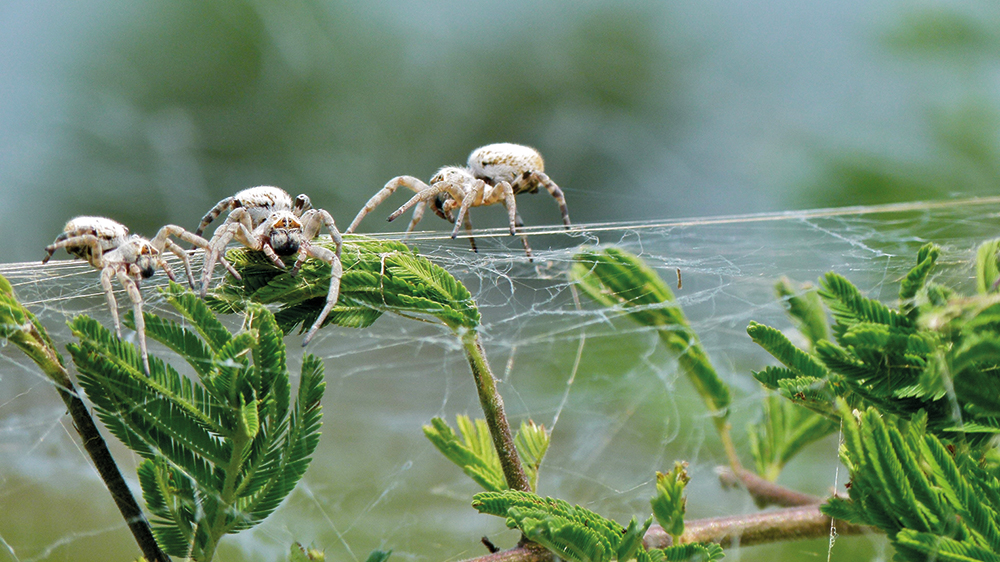
What may at first seem to be a behaviour that reduces the survival or reproductive capacity of an individual is, in reality, a mechanism that favours the indirect transmission of its genes to future generations by ensuring the survival or reproduction of its relatives. We can find very different examples of this kin selection, such as African social spiders (Stegodyphus dumicola), which sacrifice themselves to be eaten by their offspring, or prairie dogs (Urocitellus beldingi), which put themselves in danger by alerting conspecifics about the presence of predators. / Bernard Dupont
During the day, these vampires take refuge in caves or hollow tree trunks, in very stable social groups. When a vampire returns to the group after an unsuccessful night, other members of the group regurgitate enough blood to quench its thirst. In exchange, it will return the favour on future occasions. In fact, donations are not random, but tend to occur between vampire bats with close social ties, and the best predictor of the amount of food that will be shared with another bat is the amount of food received from it in the past. This is one of the classic and best documented cases of a phenomenon called «reciprocal altruism», postulated in 1971 by the brilliant and unorthodox ethologist Robert Trivers.2 For reciprocal altruism to be evolutionarily stable, three premises must be met. First, there must be an opportunity for the same individuals to interact repeatedly over time, so that both can benefit from cooperation. Second, the benefits of receiving help must outweigh the costs of providing it. Third, individuals must be able to individually recognise their conspecifics in order to avoid sharing food with uncooperative individuals (hence preventing selfish strategies from spreading). All these conditions are met in the case of vampire bats, and they undoubtedly underlie many of the cooperative behaviours of our species as well.
Reciprocal altruism is in fact only one of several types of mechanisms mediated by direct benefits that maintain cooperation between members of a social group. What all types of cooperation of this kind have in common is that the donor (i.e., the one who helps) obtains benefits that, in the short or medium term, result in the increase of their own direct fitness. The problem is the same in all cases, too: how to prevent the spread of freeride strategies that take advantage of the cooperation of others. This is where a variety of social control mechanisms come into play by, as in the human species, rewarding cooperation and punishing selfishness (Riehl & Frederickson, 2015). For example, in some species of cooperative breeding birds, fish, and insects, subordinate helpers are harassed or punished by dominant individuals when they do not contribute. However, it seems that, in most cases, the short- or long-term benefits of helping provide sufficient evolutionary incentive to maintain cooperation. In the case of cooperative breeding, non-breeding helpers tend to increase their survival and their ability to breed successfully in the future.
«Social evolution studies how and why cooperation has resulted in all sorts of social behaviours and adaptations»
This same principle, mutual direct benefits, can explain cooperation between different species. When a cleaner fish chooses a client (a much larger predator that could easily swallow it whole), that client will let it approach and feed on the parasites, dead skin, and infected tissue around its gills and on its body surface. This is a mutualistic relationship from which both extract critical benefits for their survival and reproduction. The cleaner fish depends on its client as a source of food, and the client needs to rid itself of parasites and keep its skin healthy. This type of relationship is often taken to such extremes that the two mutualistic species become completely dependent on each other, leading to a new type of individual. Such is the case with lichens, the result of close cooperation between a fungus and one or more populations of algae or cyanobacteria. This was also the evolutionary scenario for the endosymbiosis processes that gave rise to the eukaryotic cell and which, as we have shown, constitute a cornerstone in the history of life.
Conclusions
On 27 December 1831, the H.M.S. Beagle set sail from Plymouth for Tierra del Fuego on a voyage that, over the course of five years, would take a very young Charles Darwin, who had just graduated from Cambridge University at the age of 22, around the world. From South America to the Pacific Islands via Tahiti, Australia, New Zealand, Africa, and many of the Atlantic islands, this adventure would change the life of the English naturalist and leave its mark on the history of science and humanity. In his delightful logbook, Darwin narrates an expedition that would lead him to collect hundreds of animal and plant specimens, such as the famous finches of the Galapagos Islands. Step by step, notation by notation, and specimen by specimen, the germ of an idea grew in his mind, an idea he would take years to elaborate, nourish, and perfect. It would take no less than 28 years from the time the Beagle weighed anchor on that cold December day to the publication of Darwin’s opus magnum, On the origin of species, on 24 November 1859 (Darwin, 1859). Darwin’s exquisite work compiling and describing the extraordinary diversity of forms, colours, and behaviours he encountered during this voyage – and for many years afterwards in his subsequent research – would eventually give birth to one of the most brilliant, revolutionary and (for many) dangerous theories in history. In the words of philosopher Daniel Dennet (1995): «[Darwin’s idea] eats through just about every traditional concept […] [it] is a universal solvent, capable of cutting right to the heart of everything in sight. The question is: what does it leave behind?».
More than a century after Darwin’s death, and particularly since the mid 20th century, we have begun to understand how this «universal solvent» also shed light on the evolution of cooperation, giving rise to one of the most exciting and ambitious scientific disciplines in evolutionary biology: social evolution. Its subject of study is how and why cooperation has resulted in all sorts of social behaviours and adaptations, including some (if not all) of the great evolutionary transitions that have shaped life as we know it. It is the scientific study of the evolution and role of cooperation, a discipline without which it would be impossible to understand life, from its origin in those first replicators heated by hydrothermal vents to the tangled social relationships that make up our society and culture.
Notes
1. Hence its name, eukaryotes (eu, “true”; karyon, “core”). (Go back)
3. In his invaluable memoirs, Trivers (2017) describes, among many other adventures, the time he spent behind bars, his role in founding an armed group to defend homosexuals in Jamaica, and the time he helped Huey Newton flee, the then leader of the Black Panthers. (Go back)
References
Bourke, A. F. G. (2011). Principles of social evolution. Oxford Series in Ecology and Evolution. Oxford University Press.
Darwin, C. (1859). The origin of species. Murray & Sons.
Dennet, D. C. (1995). Darwin’s dangerous idea. Simon & Schuster.
Hamilton, W. D. (1964a). The genetical evolution of social behaviour. I. Journal of Theoretical Biology, 7, 1–16. https://doi.org/10.1016/0022-5193(64)90038-4
Hamilton, W. D. (1964b). The genetical evolution of social behaviour. II. Journal of Theoretical Biology, 7, 17–52. https://doi.org/10.1016/0022-5193(64)90039-6
Laland, K. (2008). Animal cultures. Current Biology, 18, R366–R370. https://doi.org/10.1016/j.cub.2008.02.049
Marshall, J. A. R. (2015). Social evolution and inclusive fitness theory. Princeton.
Maynard Smith, J. (1964). Group selection and kin selection. Nature, 201, 1145–1147. https://doi.org/10.1038/2011145a0
Riehl, C., & Frederickson, E. (2015). Cheating and punishment in cooperative animal societies. Philosophical Transactions of The Royal Society B, 371, 20150090. https://doi.org/10.1098/rstb.2015.0090
Trivers, R. (2017). Vida indómita. Antoni Bosch.


